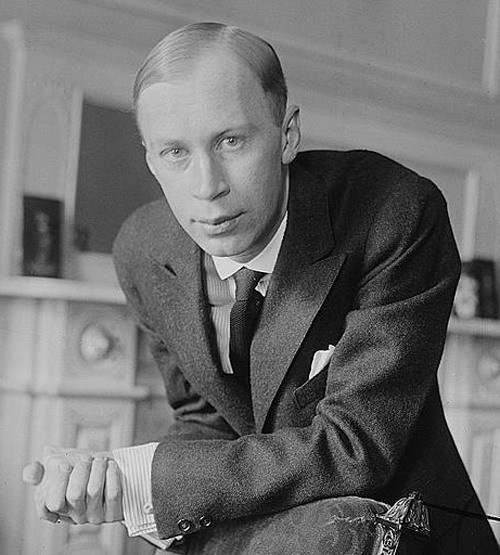I don’t know whether it was deliberate or not, but the Portland Symphony Orchestra has programmed for its Jan. 27 concert a strange cousin of Stravinsky’s “Rite of Spring,” the 100th anniversary of whose tumultuous premiere is being celebrated this concert season.
With his marketing antennae fully extended, ballet master Sergei Diaghilev was looking for a follow-up to the “Rite” that would generate the same violent response and publicity.
He had heard of another young Russian composer whose Piano Concerto No. 2 had “raised the price of rotten eggs in St. Petersburg” — Sergei Prokofiev — and commissioned a new ballet from him, “Ala and Lolli.” The ballet was rejected by the impresario and then reworked into the orchestral “Scythian Suite,” which provoked exactly the kind of riot Diaghilev was looking for.
The year 1913 was tumultuous for the composer as well. In addition to writing some of his radical early works, Prokofiev was also conducting Haydn, whose work he had studied thoroughly. He began to think of a symphony in the style of Haydn that would incorporate the humor and sly cheating of expectations that the composer had reveled in while using thoroughly modern harmonies.
The result was the Symphony No. 1 (“Classical”), which was not completed until 1917, when Prokofiev was reading Kant in a cabin, without a piano.
“Until then, I had always composed at the piano (Prokofiev was also a noted virtuoso pianist), but I noticed that the thematic material composed away from the piano was often better. I had been playing with the idea of writing a whole symphony without the piano, thinking that such a piece would have more natural and transparent colors,” he said. Prokofiev went with a form that he know inside and out, without the assistance of the piano — Haydn’s.
Maybe it was a reaction to Kant, but the entire symphony is one long musical joke, which also happens to be a work so delightful that it has remained a favorite among audiences, even those who don’t get it. They notice something strange about the symphony but can’t quite put their finger on it.
The first joke is the score. It sounds deceptively simple, like a chamber symphony written for amateurs, but it also happens to be fiendishly difficult, stretching the most gifted musicians to their limits. The “Classical” symphony is known as the ultimate test of any violin section. A flautist said that reading the score made her lips hurt.
Most disquieting to the traditional ear is Prokofiev’s playing with harmonies — the music shifts from D major to C major in the first movement after just long enough for the home key to be built up for a let-down.
The symphony begins with what is known in classical circles as a “Mannheim rocket” — a rapidly ascending arpeggio. Prokofiev’s rocket takes a path of its own, leading to a bird song.
The typical minuet movement becomes a gavotte in which the courtly atmosphere is interrupted by a peasant-like series of 32 chords in the accompaniment, all exactly the same. Prokofiev does the same thing with a single “E” 50 times in the finale. Is this a reference to Schubert, whose use of repeated notes sometimes make one think of early rock ‘n’ roll?
Finding the jokes is not important at all, but it makes one of the literature’s masterpieces even more fun to listen to. For comparison with the real thing, PSO music director Robert Moody has programmed two works in celebration of Mozart’s birthday: His Symphony No. 39 and the Violin Concerto No. 3, with concertmaster Charles Dimmick as soloist.
Christopher Hyde is a writer and musician who lives in Pownal. He can be reached at:
classbeat@netscape.net
Send questions/comments to the editors.



Success. Please wait for the page to reload. If the page does not reload within 5 seconds, please refresh the page.
Enter your email and password to access comments.
Hi, to comment on stories you must . This profile is in addition to your subscription and website login.
Already have a commenting profile? .
Invalid username/password.
Please check your email to confirm and complete your registration.
Only subscribers are eligible to post comments. Please subscribe or login first for digital access. Here’s why.
Use the form below to reset your password. When you've submitted your account email, we will send an email with a reset code.